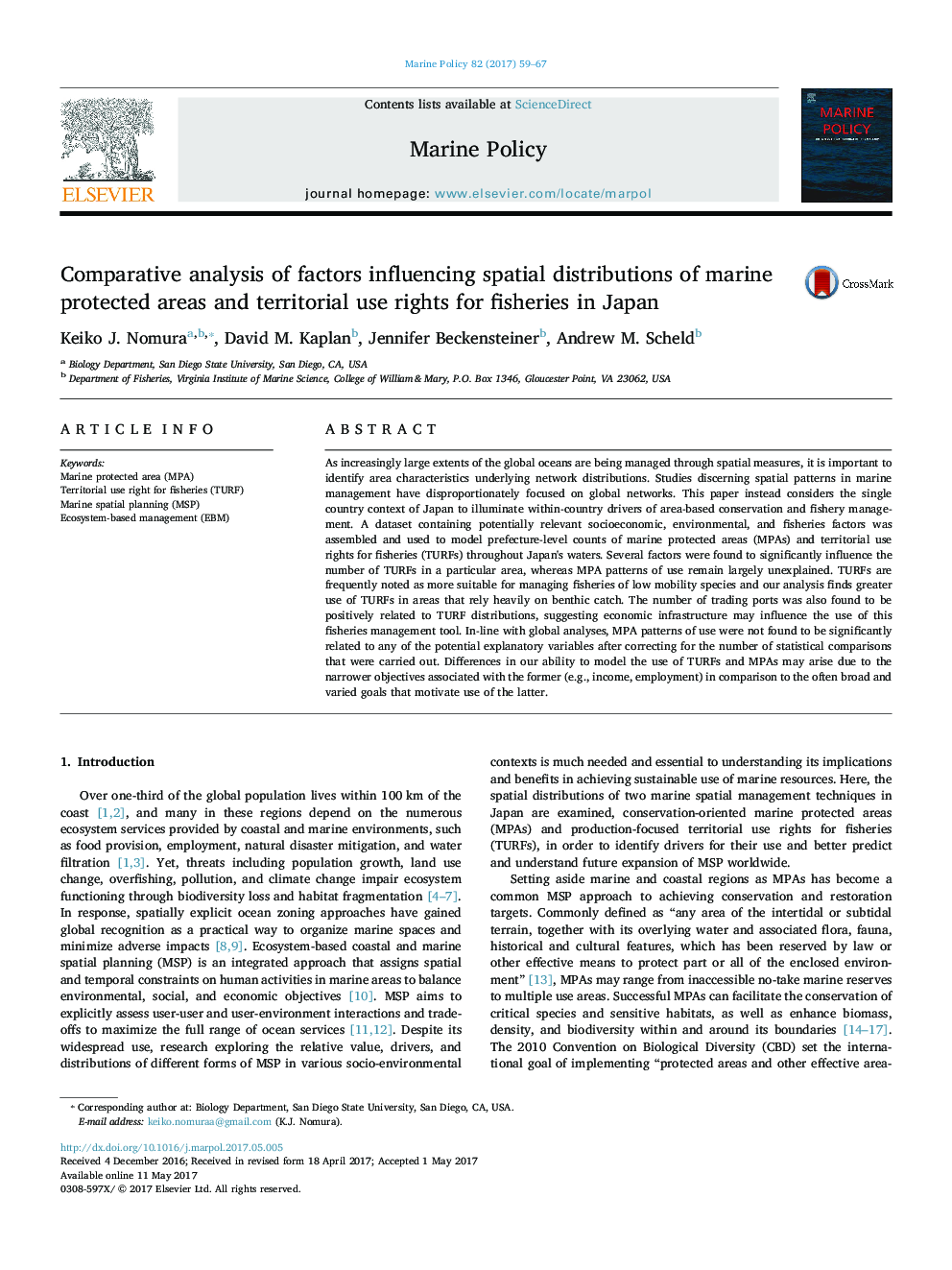| کد مقاله | کد نشریه | سال انتشار | مقاله انگلیسی | نسخه تمام متن |
|---|---|---|---|---|
| 5118262 | 1485497 | 2017 | 9 صفحه PDF | دانلود رایگان |
• Marine management may depend upon an area’s biological or socioeconomic conditions.
• Assessed distributions of MPAs and TURFs in Japan using generalized linear models.
• Consistent with global analyses, Japan’s MPA network is weakly related to drivers.
• TURF system is strongly linked to fisheries resources and socioeconomic variables.
• Factors driving management with diverse objectives are often challenging to detect.
As increasingly large extents of the global oceans are being managed through spatial measures, it is important to identify area characteristics underlying network distributions. Studies discerning spatial patterns in marine management have disproportionately focused on global networks. This paper instead considers the single country context of Japan to illuminate within-country drivers of area-based conservation and fishery management. A dataset containing potentially relevant socioeconomic, environmental, and fisheries factors was assembled and used to model prefecture-level counts of marine protected areas (MPAs) and territorial use rights for fisheries (TURFs) throughout Japan's waters. Several factors were found to significantly influence the number of TURFs in a particular area, whereas MPA patterns of use remain largely unexplained. TURFs are frequently noted as more suitable for managing fisheries of low mobility species and our analysis finds greater use of TURFs in areas that rely heavily on benthic catch. The number of trading ports was also found to be positively related to TURF distributions, suggesting economic infrastructure may influence the use of this fisheries management tool. In-line with global analyses, MPA patterns of use were not found to be significantly related to any of the potential explanatory variables after correcting for the number of statistical comparisons that were carried out. Differences in our ability to model the use of TURFs and MPAs may arise due to the narrower objectives associated with the former (e.g., income, employment) in comparison to the often broad and varied goals that motivate use of the latter.
Journal: Marine Policy - Volume 82, August 2017, Pages 59–67
